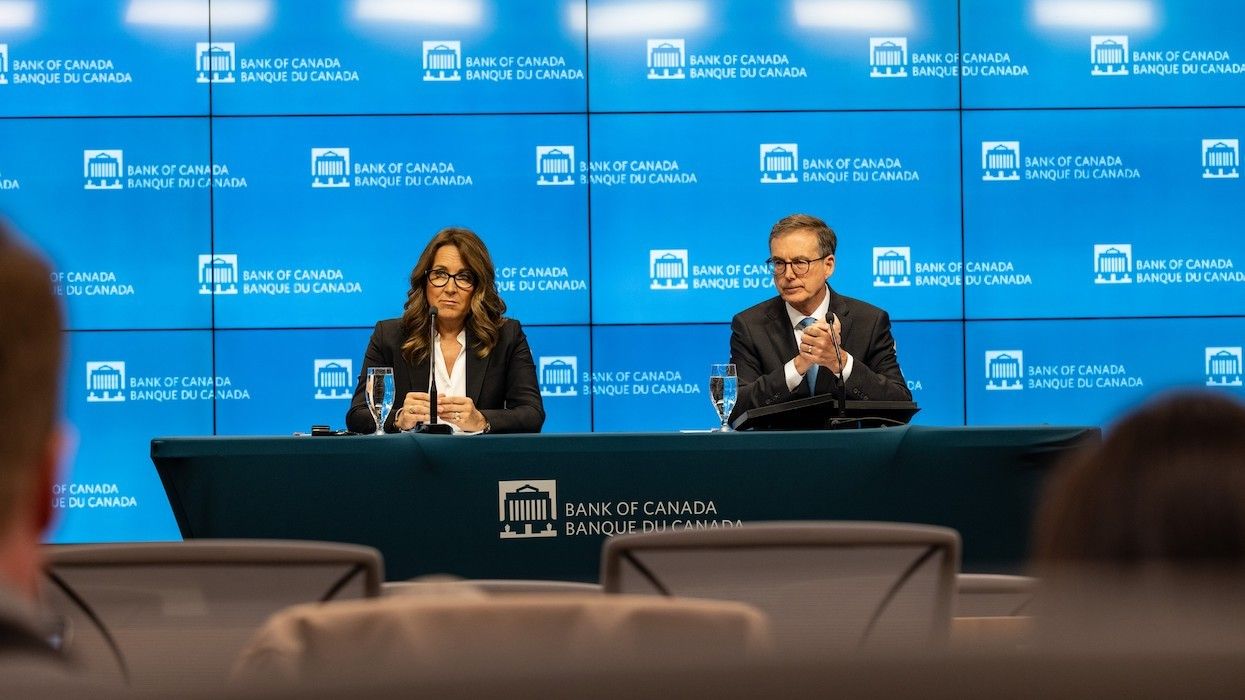On Wednesday morning, the Bank of Canada (BoC) announced they are keeping the policy rate steady at 2.75% for their July decision. This follows two consecutive holds from the Bank in April and June.
The BoC has delivered a total of 225 basis points (bps) worth of cuts since June 2024 — more than any other global central bank — including half-point cuts in both October and December of last year. But today's decision reflects ongoing caution amid persistent inflation, elevated uncertainty surrounding trade policy, and a still-cooling job market.
In a statement, BoC Governor Tiff Macklem cited the fact that the Consumer Price Index, at 1.9% at last count, is a tick lower than target, but that there continues to be evidence of underlying pressures. He also spoke trade disruptions, but credited the Canadian economy for "showing some resilience so far."
"At this rate decision, there was clear consensus to hold our policy rate unchanged. We also agreed that we need to proceed carefully, with particular attention to the risks and uncertainties facing the Canadian economy," Macklem said. "These include: the extent to which higher US tariffs reduce demand for Canadian exports; how much this spills over into business investment, employment and household spending; how much and how quickly cost increases from tariffs and trade disruptions are passed on to consumer prices; and how inflation expectations evolve."
Leading up to today’s announcement, economists with Canada’s ‘Big Five’ banks were by and large calling for a rate pause, pointing to "easing recession fears" based on recently released business and consumer surveys. "This week’s releases don’t shift the dial for the Bank with July’s rate decision now essentially locked in – the employment report sealed a hold," wrote TD Economist Maria Solovieva in a report from Friday. "The real question now is whether it stays on hold in September and beyond. For now, markets are only pricing in half a cut by year-end."
For their part, TD economists are now predicting a benchmark rate of 2.25% by the third quarter and through to at least the end of 2026. In TD's camp are economists with CIBC — calling for a rate of 2.50% in September and 2.25% by December — and BMO — calling for a rate of 2.25% by October and through to the end of 2025.
Meanwhile, updated forecasts from economists with Scotiabank and RBC indicate that the BoC won't be cutting again in its upcoming three meetings. Economists with Scotiabank have long called for a series of holds through 2025, which would keep the policy rate steady at 2.75% — where it’s been since March and the early days of trade war fears. Further easing won't come until 2026, according to Scotiabank, and then they are forecasting just a 25-basis point cut to 2.50% at some point in the year.
RBC’s forecast has the benchmark interest rate staying at 2.75% — potentially until the end of 2026. “The central bank was already approaching the end of its easing cycle. It opted to pause at the last two policy meetings after an earlier and more aggressive easing cycle over the past year,” said Economist Claire Fan in a June 12 report.
“Near term growth has shown resilience and future inflation after the recent upside surprises is still uncertain. Fiscal support is stepping up, and better able to provide timely, targeted, and temporary support needed to address the immediate impact of tariffs.”
Wednesday's statement from Macklem additionally highlights the release of the Bank's July Monetary Policy Report (MPR), which does not present "a conventional forecast for growth and inflation" — as was the case in April — as tariffs continue to be too unpredictable.
"So, we present three scenarios. The first is what we’re calling our current tariff scenario — it presents a view of how growth and inflation would evolve if the trade arrangements currently in place or agreed were to remain. The other two scenarios examine how things could play out if tariffs escalate, or if they de-escalate from where they are now. These three scenarios are designed to capture the uncertainty about US trade policy," he said. "I want to underline that the lack of a conventional forecast does not impede our ability to take monetary policy decisions. But the unusual degree of uncertainty does mean we have to put more weight on the risks, look over a shorter horizon than usual, and be ready to respond to new information."
The next interest rate decision is scheduled for Wednesday, September 17. A full 2025 schedule can be found here.
- Scotiabank, RBC Only Big Banks Not Calling For More Interest Rate Cuts This Year ›
- Bank Of Canada Holds Interest Rate For Second Time In A Row ›
- Where Every Big Bank Stands On Wednesday's Interest Rate Announcement ›
- Toronto Realtors Report Most July Home Sales Since 2021 ›
- Where Every Big Bank Stands On September's Interest Rate Announcement ›
- BoC Cuts Interest Rate To 2.50% After Three Consecutive Holds ›






















